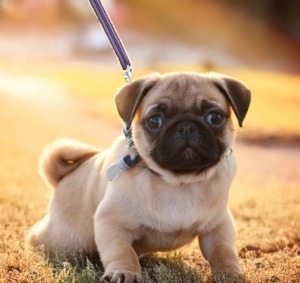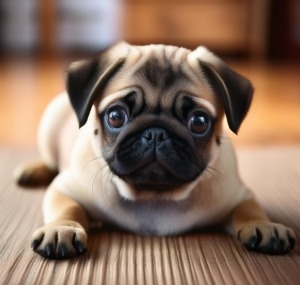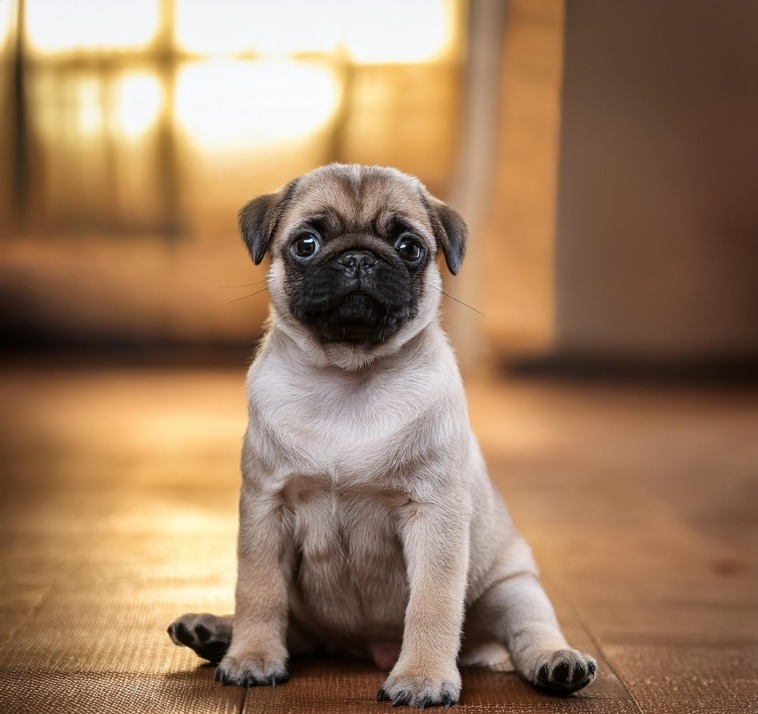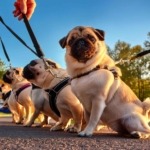Last updated on September 26th, 2024
Here’s on Overview:
Addressing Behavioral Issues in Pug Puppy Training
Short Sessions of Pug Puppy Training
Health Checks: Regular visits ensure that your pet is okay over time.
Basic Commands: Teach Sit, Stay, Come and More
The Power of Positive Reinforcement; Reward-Based Training Methods
Dealing with Stubbornness: Overcoming Common Pug Challenges
Leash Training: Ensuring Walks Are Fun and Safe
Advanced Tricks: Keeping Your Pug Mentally Stimulated
Addressing Behavioral Issues: Bark, Chew, & More
Consistency is Key: Maintaining Good Habits Long-Term
Addressing Behavioral Issues in Pug Puppy Training
The main characteristics in Pug Puppy Training includes the following:
- Playfulness: There is a big effect Naturally energetic puppies that love interactive play in Pug Puppy Training.
- Affectionate Nature: They thrive on human interaction hence enjoy attention seeking moments such as cuddles.
- Stubborn Streak: Can be stubborn requiring patience while training them.
- Social Behavior: These pets are social animals thus get well along with people and other pets they come across.
- Intelligence: They highly intelligent creatures who can learn commands quickly but sometimes display selective hearing.
Training would not make sense without an understanding of these behaviors.
Setting the Foundation Importance of Early Training During early puppyhood stage, it is highly important to train dogs due to its impact on their behavior throughout life. Start during the puppy stage when they absorb new information quickest and create habits effectively.
- Socialization: Expose your pet to different environments including various places and people to reduce anxiety levels.
- Basic Commands: Teach your pet how to sit, stand or come. This helps control its behavior effectively.
- Consistency: a consistent training routine maintains learned behaviors well.
- Positive Reinforcement: Use treats and praise only for good responses.
- This encourages the dog to repeat any good behavior.
Short Sessions of Pug Puppy Training
Creating a Pug-Friendly Environment Essentials for Success An environment friendly to pugs is necessary in order to train it effectively.
- Comfortable Space: Have a warm bed in a quiet made for them only.
- Consistent Schedule: Regular feeding and potty times should be maintained.
- Safe Toys: Choose toys that can’t be swallowed like non-toxic, durable ones
- Healthy Diet: Feed vet-approved balanced food. Hydration – Clean water should be available at all times.
- Training Tools: Clicker, Treats, Harnesses e.t.c
- Calm Atmosphere: Minimize distractions such as loud noise while training is going on.
- Regular Exercise: Daily walks are helpful in burning off energy
Health Checks: Regular visits ensure that your pet is okay over time.
Socialization Strategies Introducing Your Pug into the World Early socialization is vital for your pug. Owners of pugs need to consistently expose their pets to different types of environments, humans and animals among other subjects.
- Environment Exposure: Under this heading expose your pug puppy to various places such as parks or beaches or urban areas.
- Human Interaction: Encourage gentle interaction with strangers including children.
- Animal Encounters: Let him meet other dogs but make sure they are healthy and not aggressive toward the little pooch.
- Routine Vet Visits: Take them regularly so that they can become accustomed with seeing vets without panic attacks due to familiarity of the environment.
- Obedience Classes: Joining such programs will enhance social skills and obedience of your pet dog.

“ A well – socialized pug is a confident and happy companion.”
Positive reinforcement should be maintained throughout the process.
- Housebreaking Tips: Effective Potty Training Techniques To housebreak a pug, you need to be consistent and patient. So follow these steps for effective results:
- Establish a Routine: This simply means taking the puppy outside at certain times every day such as after meals, naps or playtime.
- Specify the Spot: Use the same place outside every time. Pugs will associate this place with potty time.
- Positive Reinforcement: Reward your puppy with treats as soon as it excretes outdoors.
- Supervise Indoors: Make sure you are watching your pug or keep him isolated to minimize accidents.
- Crate Training: Crates make dogs less likely to mess where they sleep.
- Clean Accidents Properly: Deploy enzyme cleaners to eradicate all odors and prevent recurrences.
Basic Commands: Teach Sit, Stay, Come and More
The ideal way of training a Pug is through constant reinforcement of basic commands which are critical in establishing good behavior.
- Sit: Place a treat near the Pug’s nose just above the ground. As the Pug’s head follows it lower its rear end. Once seated, give the treat saying “sit.”
- Stay: Tell your dog to sit down. Extend your hand straight out and say “stay.” Back up only rewarding if he holds his position.
- Come (on leash): Gently tug on the leash towards yourself as you speak “come.” Give praise or reward with treats for coming successfully.
- Down (drop): Offer something tasty that is close to the floor and then pull it away slowly. A successful lie-down warrants one being rewarded in some way or another
- Heel (leash walking): Keep a short lead leash beside you while walking closely saying “heel” each step of the way.
The Power of Positive Reinforcement; Reward-Based Training Methods
Positive reinforcement means that desired behaviors are rewarded so as to encourage their repetition with common rewards such as:
- Treats: high value treats grab attention and act as strong motivators;
- Praise: verbal affirmation like “Good boy!” reinforces positive behavior;
- Toys: fun toys make great rewards and add an element of enjoyment during training sessions;
- Physical Affection: petting or gentle strokes strengthen bonds whilst also rewarding good behavior.
These reward based approaches make training more efficient. Pugs are most responsive to training when it is fun for them and they are rewarded accordingly. Consistency and patience are important. Avoid any kind of punishment as it may create fear and slow down the entire process.
Dealing with Stubbornness: Overcoming Common Pug Challenges
Training a pug can be challenging because they tend to be stubborn. Ways to deal with this include:
- Consistency: keeping a regular schedule helps pugs know what to expect;
- Positive Reinforcement: rewarding good behavior reinforces desired actions;
- Short Sessions: shorter training times, from 10-15 minutes, help keep a dog’s attention span;
- Patience: it pays off better if one remains calm and patient.
- Clicker Training: A clicker will allow for clearer communications.
“Training is not a destination; it’s a journey. Keep the journey positive.”
These techniques in Pug Puppy Training that can help manage pug stubbornness leading to better obedience.
Leash Training: Ensuring Walks Are Fun and Safe
Walking on leash is essential for the safety and enjoyment of a pug. First, choose comfortable harnesses or lightweight leashes that won’t weigh down your pet. Begin leash training indoors by allowing the dog wear the harness and leash around its body until he gets used to doing so.
- Introduce Walking Commands: Just use simple commands such as “heel” or “stop.”
- Practice in Safe Spaces: Begin within a small area free from distractions first.
- Reward Good Behavior: Always have some treats on hand for compliance rewards.
- Correct Pulling: If your dog pulls, stop walking until he relaxes then continue after you resume walking.
Effective leash training requires consistency and patience.
Advanced Tricks: Keeping Your Pug Mentally Stimulated
Mental stimulation is equally important as physical exercise in pugs. This can be achieved through implementing advanced tricks into their routines thereby enhancing mental stimulation.
- Puzzle Toys: They are interactive and can be filled with treats that challenge their problem solving skills.
- Hide and Seek: Enhance scent-tracking abilities by hiding treats or toys for them to find.
- Clicker Training: It helps in developing concentration thereby making learning of complex behaviors quicker.
- Agility Courses : Straightforward agility configurations will test both the physical and mental coordination.
- Scent Work: Teach them to know, identify and find specific scents in rewardingly challenging mental exercises.
To prevent boredom, challenges should be rotated periodically.
Addressing Behavioral Issues: Bark, Chew, & More
Pugs are characterized by frequent barking and chewing. For example, reduce barking by identifying what triggers it and desensitizing the puppies by slow exposure to those stimuli. Provide chew toys for redirection of inappropriate chewing.
Barking Solutions in Pug Puppy Training:
- Identify Triggers
- Desensitization
Chewing Solutions:
- Provide Chew Toys
- Teach Boundaries

These behaviors can help turn pugs into well-behaved family members.
Consistency is Key: Maintaining Good Habits Long-Term
Ten to fifteen minute daily training sessions are not too much for Pugs. A consistent pronunciation that has been consistently used with clear commands enhances understanding. Positive reinforcement including verbal praise or treats encourages compliance.
- Regular schedules: Fix times for training periods, feeding times and play time
- Consistent environments: Train in familiar quiet places with no distractions if possible.
- Repetition: Do this regularly to keep the commands vibrant.
- Patience: Be patient because some progress may be slow so don’t punish it yet.
Maintaining habits throughout a Pug’s life means more than just obedience but a well-adjusted happy pet too.
Article from: Abdullah (Senior Trainor)




